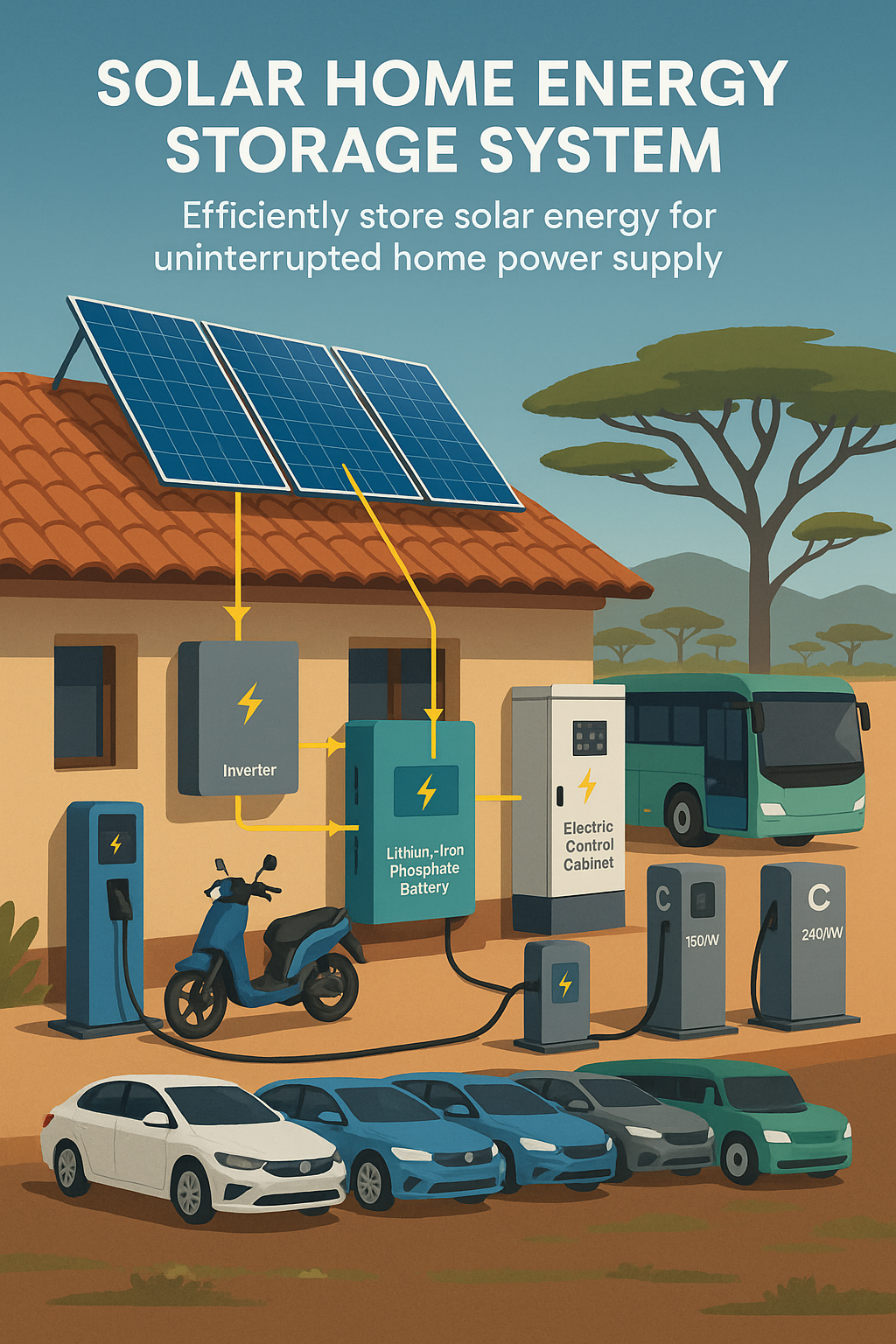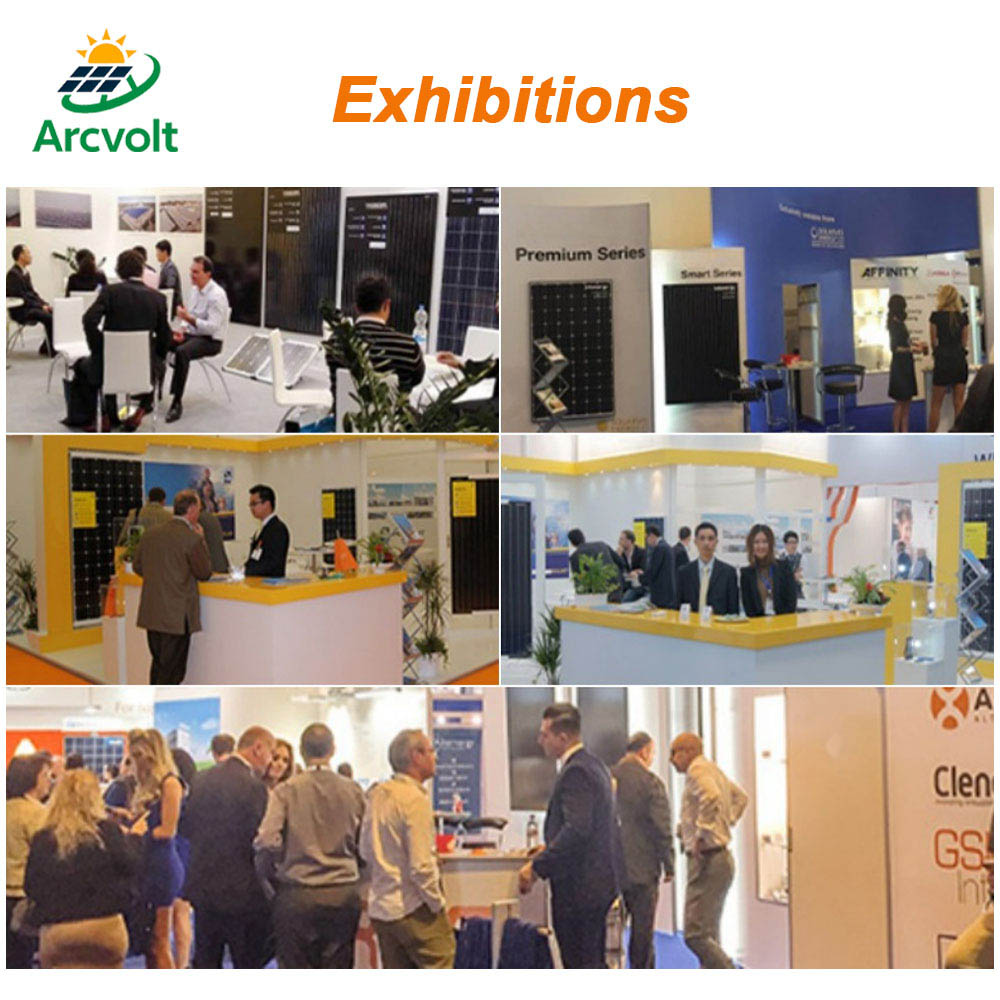Battery Energy Storage System 215kWh BESS Battery 100kw Inverter

1.Massive Commercial Power Hub
Our Battery Storage System(ARCV-100/215kWh) packs a substantial 215kWh rated capacity and a powerful 100kW rated output from its inverter. With a high battery voltage of 768V and a 0.5C charge/discharge rate, this system delivers robust, continuous power for demanding commercial and industrial loads. The Arcv-100/215kWh is engineered to be the high-performance core of your energy strategy.
2.Industrial-Grade LFP Core for Longevity
The advanced LFP (Lithium Iron Phosphate) battery cells inside the BESS Battery(ARCV-100/215kWh) guarantee a long and reliable service life, supported by a very high 95% Depth of Discharge (DoD). The system's high-efficiency, transformerless design and 99% MPPT efficiency maximize energy throughput from your solar array, ensuring minimal energy loss. This 215kWh battery energy storage system is a durable, long-term asset for any business.
3.Multi-Layered Safety & Reliability System
This battery energy storage system(ARCV-100/215kWh) integrates a comprehensive safety architecture, including a two-level fire extinguisher system, smoke sensors, and full thermal management with industrial air conditioning. Multiple levels of software and hardware protection constantly monitor for faults. The entire assembly is housed in a rugged IP54-rated cabinet, providing superior protection and mission-critical reliability for your operations.
4.Flexible & Streamlined All-in-One Design
This battery energy storage system features a modular design within a compact 1800*1250*2000mm(Dimension W*D*H)footprint for flexible configuration and easy installation. The battery storage system's flexible application allows for seamless integration into various scenarios, providing a truly versatile power solution.
5.Full Functionality & Smart Integration
The battery storage system (ARCV-100/215kWh) features a built-in Energy Management System (EMS) with powerful functions like peak saving, virtual enlargement, and new energy power absorption. The battery energy storage system supports seamless on/off-grid transfer in less than 20ms and offers a full suite of communication ports (RS485, RJ45, 4G, WIFI, DI/DO) for easy integration with external control systems, ensuring smart, reliable operation anywhere you do business.
【Key Advantages】
Comprehensive Active Safety: Equipped with a two-level fire extinguisher system, smoke sensors, and full thermal management with industrial air conditioning for proactive hazard mitigation.
Mission-Critical Uptime: Guarantees uninterrupted power for critical loads with a Static Transfer Switch (STS) module that provides a seamless on/off-grid transfer in less than 20 milliseconds.
Inherently Safe Battery Chemistry: Built with advanced LFP (Lithium Iron Phosphate) cells, renowned for their high thermal stability and resistance to thermal runaway, providing the safest foundation for energy storage.
Robust All-Weather Construction: Housed within a heavy-duty IP54-rated cabinet weighing 2600kg, ensuring the system is protected from environmental factors and built for long-term durability.
Specifications
| BESS Battery Specification | AC Specifications | ||
| Battery type | LFP | Rated voltage | 400Vac |
| Cell capacity | 3.2V/280Ah | Voltage range | 230/400Vac |
| PACK config | 1P20S | Frequency range | 50/60+2.5Hz(50/60Hz self-adaption) |
| PACK Qty | 12 | Grid system | 3P+N+PE |
| Rated capacity | 215kWh | solation transformer | No |
| Rated voltage | 768V | Rated power | 100KW |
| Voltage range | 636-864Vdc | Peak power | 10KW |
| Charge/Discharge | 0.5C Rated | Rated current | 144A |
| DOD | 95% | Over load capacity | ≤110%Continues Running≤120%1Min |
| Cooling system | Air Cooling | Power factor | -0.99~+0.99 |
| Fire fighting system | Two Level Protection,Standard: Aerosol+HFC-227ea,Optional:PERFLUORO | On grid THDI/THDV(Off grid) | <3%,Ful lood |
| STS module power capocity | 200KW | ||
| System Specification | Tronsfer time(On-off Grid) | ≤20ms | |
| Temperature range | -25℃~65℃,>45℃ power derating | PV Specification | |
| Storage temperature | -40~75℃ | Max.PV input voltage | 1000V |
| Noice | <70 dB | Max.PV input power | 110KW |
| Dimension W*D*H(mm) | 1800*1250*2000 | No.of MPPT/String per MPPT | 2/1 |
| Weight(kg) | 2600 | MPPT voltage range | 350-1000V |
| P class | IP54 | MPPT current | 200A (100A/100A) |
| Coolng type | Industry level Air Conditional | MPPTefficiency | 99% |
| EMS | Manudl Mode,Peak saving,virtual enlargement,New Energy power absorption,Anti-flow mode. | Communication protocol | Modbus RTU, ModbUs TCP, IEC104, MQTT, Etc. |
| Support remcte management and control | Communication port | RS485/RJ45/4G/WIFI/DIDO | |





We are a leading innovator and manufacturer in lithium battery technology, dedicated to engineering and manufacturing high-quality LiFePO4 solar batteries and power systems. Our core business involves the complete lifecycle of product development, from initial design to final production of dependable lithium battery packs. We proudly serve diverse sectors with customized solutions for energy storage, critical backup power systems, and compatible inverters and solar panels.
Based on automated production technology, Arcvolt are able to meet our customers' product needs quickly. However, the exact lead time depends on the quantity and the season you place the order.
Usage scenario: wall-mounted batteries, rack-mounted batteries, and stacked batteries. Voltage: 48V or 51.2V batteries, low/high voltage batteries Application: Residential storage batteries, industrial and commercial energy storage batteries.
While the typical home system uses 2 or 3 batteries, the perfect number for you is a personal choice. It all comes down to what you want to power during a grid outage and for how long. Do you need to run just the essentials or your whole house?
Yes, going completely off-grid is possible, but it's a significant step beyond standard solar with battery backup. A true off-grid system requires a much larger solar array and battery bank to power your home 24/7, making it a substantial investment. You also need a reliable backup source, like a generator, for days without sun. It's important to note that in North Carolina, disconnecting a home from the utility grid can be a complex process.
We accept EXW,FOB,CFR,CIF,etc. You can choose the one which is the most convenient or cost effective for you.
Absolutely. Our in-house design team specializes in OEM and ODM projects to bring your brand's vision to life. Simply provide us with your concept, high-resolution logo, and any text or images you'd like to include. We will then create a professional design proof for your final approval before we proceed.
Certifications are a key part of our pre-production checklist. We start by confirming with you which certifications are needed. These requirements are then integrated into the project timeline to ensure completion before shipment, and are formally documented in the signed agreement.
We offer lifetime technical support, with our engineers available 24/7 to provide prompt online assistance.
Yes, most of Arcvolt's inverters are designed to be scalable, meaning your system can grow with your needs. However, it's something that requires planning. Before adding more panels, it's essential to confirm that your current inverter can handle the additional power. We always recommend discussing your future plans with a professional to ensure your initial system is future-ready.
It depends on whether you have batteries. For Solar + Battery systems: A hybrid inverter is essential. It seamlessly manages power from panels and batteries in a single unit. For Solar-Only systems: Traditional inverters (like string or microinverters) are an option. The main advantage of a hybrid inverter is that it eliminates the need for a separate charge controller, making for a cleaner and more efficient installation.
Selecting the right inverter is one of the most important decisions you'll make for your solar project. While technical specifications matter, the long-term value comes from the manufacturer. Arcvolt advise customers to look beyond the data sheet and assess the company on these five critical points: their warranty, quality control standards, customer service responsiveness, installation support, and competitive pricing.
Generally, you want the inverter's size to match your solar array's power output. So, if you're installing a 5,000-watt solar system, you'll need an inverter of at least 5,000 watts to handle the load.
Yes, samples are available upon request as part of the qualification process for bulk orders. Please reach out to a member of our customer service team to discuss your specific requirements and they will assist you with the next steps.
Think of it as your personal energy bank. During the day, it saves up all the extra, unused power your solar panels generate. Then, you can draw from that stored energy whenever you need it—at night, during a power outage, or to avoid high-cost peak hours. For homeowners, this means energy independence and peace of mind. For businesses, it's a powerful tool to slash electricity bills.
Smart inverters are central to a system's reliability. Our inverter provide a constant stream of performance data, giving you a real-time view of your entire solar array. If a problem arises, the inverter's diagnostic tools can pinpoint the exact issue, which significantly speeds up repairs. This intelligent monitoring is key to preventing small problems from becoming big ones and guarantees the consistent, reliable operation you expect.
MPPT is a crucial technology that ensures you're not wasting sunlight. Because sun conditions are always changing, there is always a single, optimal point where your solar panels operate most efficiently. MPPT is the brain that constantly scans and adjusts the system to find and stay locked onto that "maximum power point." This guarantees you are harvesting the most energy possible from your panels at any given moment.
It's a question of priorities, and the logical first step is always generation. You have to make power before you can store it. Solar panels directly reduce your utility bills by producing electricity. Batteries give you control over when you use the excess electricity you've already made. We help our customers design a system that maximizes their solar panel array first, as this delivers the biggest and fastest return on investment.
A grid-tied inverter is the standard type used to reduce your electricity bills with solar. It safely connects your solar system to the utility's grid, allowing you to seamlessly feed any surplus power you produce back to the utility. In return, you receive credits on your bill for that energy, a process known as net metering. For safety, these inverters automatically shut down during a power outage.
The exact amount of power you generate is unique to your home and depends on your system's size, your roof's orientation, and how much direct sun you get. However, to give you a real-world idea, our typical 6kW home system can produce around 30kWh of electricity on a clear, sunny day. For most households, that's more than enough to cover all of your energy needs for a full 24 hours.